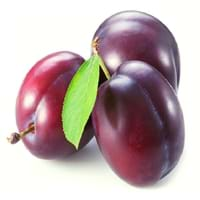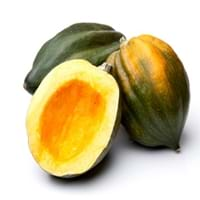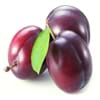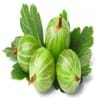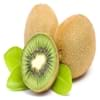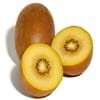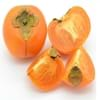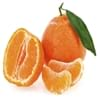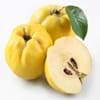Health Benefits
Cancer prevention, Cures gastro-intestinal troubles, Heart care, Increase in haemoglobin, Prevents diabetes
Anti-inflammatory properties, Arthritis treatment, Regulates Blood Sugar
General Benefits
Anti-inflammatory properties, Boosts immune system, Digestive aid, Eye care, Flu treatment, Helps in weight loss, Maintains healthy cholesterol level, Treatment of common cold
Boosts immune system, Controls blood sugar levels, Digestive aid
Skin Benefits
Anti-aging benefits, Brightens and lightens complexion, Reduces wrinkles, Skin revitalization, Treatment of dark spots
Nourishes skin, Protects skin from oxidative stress
Hair Benefits
Prevents hair loss, Promotes longer and healthier hair, Protects hair, Remedy for split ends, Treatment of dandruff
Prevents hair loss, Promotes longer and healthier hair, Regulates hair growth
Allergy Symptoms
Abdominal pains, Anaphylaxis, Vomiting
Asthma, Red rash, Swelling of mouth, tongue or lips
Side Effects
Allergic reaction
Diarrhoea, Vomiting
Best Time to Eat
As a snack in the late afternoon, Eat the fresh ones, avoid mixing with any other foods, don't eat after meal., Morning time (before lunch)
Along with meal, As a snack in the late afternoon, Don't eat after meal, Eat the fresh ones, avoid mixing with any other foods, don't eat after meal.
Vitamin B5 (Pantothenic Acid)
Vitamin C (Ascorbic Acid)
Vitamin E (Tocopherole)
Not Available
Vitamin K (Phyllochinone)
Not Available
Lutein+Zeaxanthin
Not Available
Phytosterol
Not Available
Calories in Fresh Fruit with Peel
Calories in Fresh Fruit without Peel
Not Available
Not Available
Varieties
Victoria, President, Czar, Ariel, Avalon and Oullins Gage
Bush Table Queen, Heirloom Table Queen, Festival Hybrid, Early Acorn Hybrid, Table Ace, Ebony and Cream of the Crop
Color
Pink, Purple, Red
Dark green, Green-yellow, Orange green
Inside Color
Yellow
Yellow
Taste
Juicy, Sweet, Tart
Sweetish
Origin
Caucasus
Central America, North America, Unknown
Soil Type
Clay, Loam, Sandy loam
Well-drained
Climatic Conditions
Cold
Cold, Sunny
Facts about
- In china, plums are used for production of wine.
- A chemical called amygdalin found in plum seeds, turns into toxic compound in human body.
- Plum tree produces fruit 3-5 yrs after planting.
- It was named as Acorn Squash for its resemblance to a large ribbed acorn.
- It is said that squash was being grown in Mexico as long as 10,000 years ago.
- It was the first food cultivated by native American Indians.
Other Countries
Bosnia, Chile, India, Iran, Italy, Romania, Serbia, Turkey, United States of America
Egypt, India, Iran, Italy, Mexico, Russia, Turkey, Ukraine, United States of America
Top Importer
United Kingdom
Costa Rica
Top Exporter
Chile
United States of America
Botanical Name
Prunus domestica
Cucurbita Pepo
Synonym
Not Available
Winter Squash
Subkingdom
Tracheobionta
Tracheobionta
Division
Magnoliophyta
Magnoliophyta
Class
Magnoliopsida
Magnoliopsida
Subclass
Rosidae
Dillenhidae
Order
Rosales
Cucurbitales
Family
Rosaceae
Cucurbitaceae
Species
P. domestica
Pepo
Generic Group
Rose
Not Available
Compare Plum and Acorn squash
It is important compare Plum and Acorn squash as both the fruits have a different nutritional value. Their comparison can be done on the basis of their vitamin and mineral content, calories, benefits as well as characteristics, making it easier for us to choose the best fruit for our diet. Their general health benefits are as follows:
Plum Benefits: anti-inflammatory properties, boosts immune system, digestive aid, eye care, flu treatment, helps in weight loss, maintains healthy cholesterol level and treatment of common cold.
Acorn squash Benefits: boosts immune system, controls blood sugar levels and digestive aid.
Fruits are also used as a remedy for various hair problems. The hair benefits of Plum are: prevents hair loss, promotes longer and healthier hair, protects hair, remedy for split ends and treatment of dandruff and hair benefits of Acorn squash are: prevents hair loss, promotes longer and healthier hair and regulates hair growth. Some fruits are known to cause allergic reactions. The allergy symptoms of first fruit are: abdominal pains, anaphylaxis and vomiting and the symptoms of second fruit are: asthma, red rash and swelling of mouth, tongue or lips. Get sorted Plum vs Acorn squash comparison with the help of fruit comparison tool by fruitvs.com.
